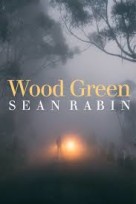Literary discursiveness in novels can be tedious. So can surprising plot turns in narratives that have been ticking along quite nicely without them. Such antics and glissandos in Sean Rabin’s debut novel, however, are welcome and enjoyable: A smart and compelling game that leads to a surreal ending that (by the skin of its teeth) pays off.
Rabin’s protagonist in Wood Green is Michael Pollard, a young academic from Sydney who wrote his PhD on Lucian Clarke, an ageing novelist who lives hermit-like and halfway up Mount Wellington, overlooking Hobart.
Michael has been employed by Lucian to put his papers in order for a biography but the pair spends much more time listening to music, smoking pot and cooking for one another. This cosiness is countered by Lucian’s testiness and a secretiveness that keeps Michael on his toes. Michael endures the aggravation because he believes Lucian’s writing is brilliant, and senses his own fiction is improving through spending time with the older man and his literary works and correspondence.
Wood Green is a mysteriously broody place where the moods of those in its community shift and sway with the weather, and with each other’s appreciation and contempt. The area seems somehow ancient and contemporary, real and unreal, and constantly at threat of disappearing (like Brigadoon) into the mist.
The town’s characters are wonderfully drawn and they earth the novel in an everydayness that makes this shimmering work, with its expansive ideas about literature and living, surprisingly accessible.
Maureen, the co-owner of the general store, is marvellous. She is Lucian’s occasional lover, a voracious and perceptive reader, and sharp as a tack.
Back in Hobart, the parsimonious B&B proprietor Andrew is also a great cameo. He has a massive ego and a small and insufferable mindset: an unctuous, unbearable mealy mouth most of us have met.
Dissections of literary styles and reflections on what it means to be a writer are central to a number of conversations that take place in Lucian’s lounge room.
I particularly loved the scene in which Lucian explains to Michael that rather than collecting his memories in photo albums he’s been marking out his life in books. ‘This is my photo album. An entire lifetime of reading. Every one of these books contains a memory of a place or an event or a person that’s more vivid in my mind than any photograph.’
For example, he says, the book Death Comes for the Archbishop by Willa Cather ‘is Ladbroke Grove in London. Grey streets. Grey sky. A basement flat … Terrible homesickness. And a constant yearning to see the sky.’
In another of his rants he tells Michael exactly what he thinks real writing is.
‘Real writing is music. So long as there’s a rhythm strong enough to lift the reader and carry them along, you can do whatever you like in a book. … Look at Malcolm Lowry, William Gaddis, Virginia Woolf, Joseph Conrad, D.H. Lawrence. George Eliot. You know how they achieved so much on the page? Because their writing contained rhythm … For writers like that it’s as strong as a bull and authoritative as a heart attack. That’s what sets them apart. And it’s the difference between real writing and just putting ink on a page.’
There’s a cautionary note in the book to reviewers about reading deeply and contextually before passing judgment on a text rather than skim reading and not bothering to read a tale to the end.
I read deeply and contextually enough to know this: Wood Green is real writing and Rabin’s rhythm is spot on.
When I turned the last page, I really wanted to hear the rhythm again.
Wood Green
Sean Rabin
Giramondo $26.95




Recent Comments